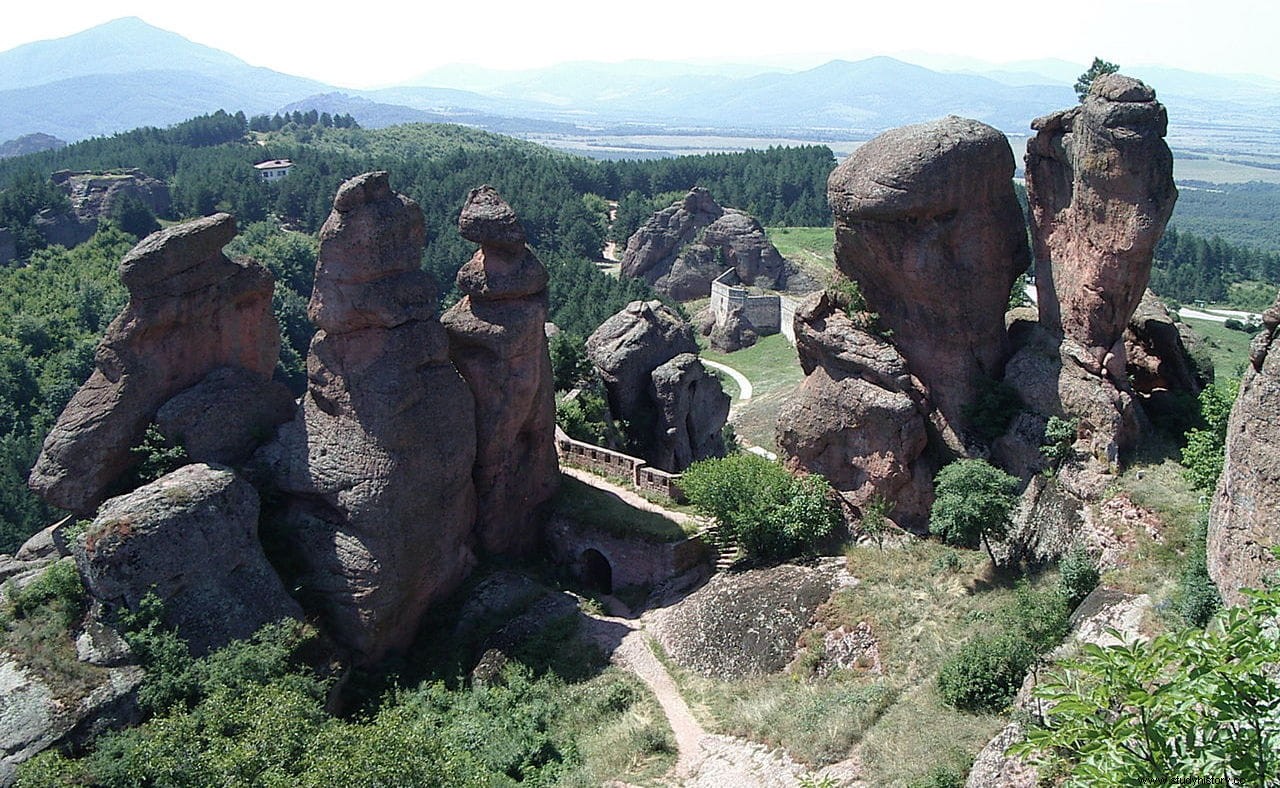Belogradchik is a small town located in the extreme north-west of Bulgaria (its name precisely means little white town ), in the foothills of the Balkan mountains.
There are the so-called Belogradchik Rocks , which extend over an area of 90 square kilometers and reach 200 meters in height.
It is a group of reddish or yellowish sandstone rock formations, with picturesque and fantastic shapes, about which there are different legends. They form steep precipices, small valleys with steep vertical slopes, caves and spectacular ensembles to which the local imagination has given names:Adam and Eve, the mushrooms, the bear, the dervish, the monks, etc.

Erosion and other natural factors have been sculpting this landscape since the Permian period, about 230 million years ago. It was declared a natural monument in 1949 and is one of the main tourist destinations in Bulgaria.
One of the most impressive places in this rocky complex is the Belogradchik Fortress (also called Kaleto, derived from the Turkish kale which precisely means strength ). It is a fort made up of three walled patios that are connected to each other through doors, distributed among the towering rocky pillars up to 70 meters high, which offer natural protection.

It occupies an area of 10,210 square meters and its original construction dates from the times of the Roman Empire, when the citadel (the structure located in the upper part of the complex) was built.
It was an observation and surveillance post, rather than a defensive structure, which remained in use between the 1st and 3rd centuries AD. It would then pass into the hands of the Byzantines, who lost it to the Bulgarians.
This defensive function would come from the expansion carried out by the Bulgarian tsar Ivan Esratsimir (considered the last medieval ruler of Bulgaria), who built fortified garrisons in front of the rocky massifs around 1370 to defend himself against Ottoman attacks.

Even so, it was captured by the Ottomans in 1396, who made new extensions, precisely those that today give the complex the typical aspect of an Ottoman castle of the time.
In 1805, French and Italian engineers were hired for the works, who also added European elements to the structure, and conditioned it to allow the use of cannons, building three new bastions and opening loopholes in the walls. These are more than 2 meters thick at the base and reach a height of 12 meters.
It is in this extension, completed in 1837, that the three interconnected courtyards were created, as well as an independent fortification, reaching a capacity for 3,000 defenders.

Belogradchik Fortress remained in use until relatively recent times, with combat being recorded for the last time in 1885 during the Serbian-Bulgarian War.
